|
 |
| Cette page a été traduite d’après un texte de Connie Bonczek, www.furballacres.com en Caroline du Sud. Merci a elle pour cette mine d’informations et pour m’avoir permis d’utiliser ses notes . |
This page is intended solely to provide basic information regarding ivory (also incorrectly referred to as blue eyed whites, bews) donkey genetics.
A true ivory miniature donkey will have pink skin and 2 tone blue eyes (ice blue iris). The coat color is cream/off-white, not white. On most adults, the cross is visible when they shed, on some however, it is not. It is common for ivory foals to have a darker coat color (dark cream or tan) with visible cross. Although some foals are born very light.
Although ivory donkeys have primarily pink skin, it is not unusual to see freckles, (small darker dots), on pink pigmented skin, around the eye, muzzle and genital area.
Here are a few pictures of miniature white-ivory donkeys: |
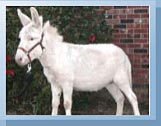 |
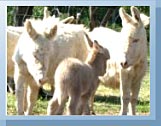 |
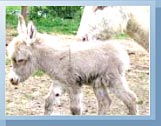 |
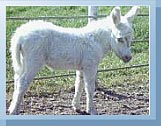 |
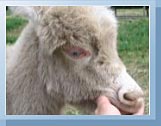 |
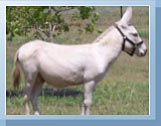 |
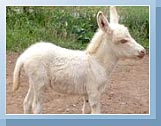 |
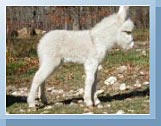 |
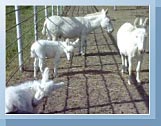 |
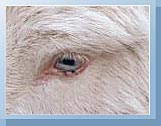 |
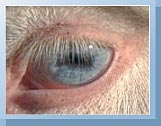 |
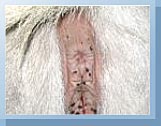 |
In general- Ivory acts as a recessive gene; requires a dose from each parent to produce an ivory foal.
1 Mating 2 ivories will always produce ivory
2 Crossing ivory to visual non-ivory (but carries the recessive ivory gene from a parent) will give a 50/50 chance for an ivory foal on each offspring. If ivory is further back in the lineage, the outcome can not be fully predicted. However, the gene can be carried down many more generations than you may think. This has been shown when an ivory foal is born to 2 non-ivory parents who were not known to carry the recessive gene.
The pictures below, are examples of gray dun/ivory recessive donkeys. All the dams are brown or gray dun, sire is ivory. |
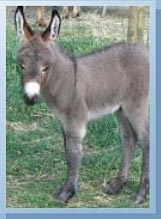 |
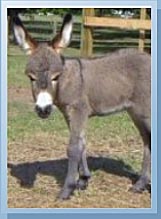 |
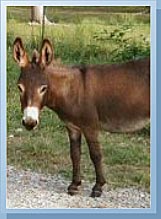 |
Although their phenotype (outward appearance) shows no signs of ivory, their geneotype (genetic makeup) does. Because ivory acts as a recessive, it does not show phenotypically unless the donkey is homozygous for ivory (has 2 doses of ivory, one from each parent). Dominant genes, on the other hand, are expressed in either form; heterozygous(one dose) homozygous(2 doses). Therefore, the dominant gene hides/masks the recessive ivory gene in the donkeys phenotype. When these hidden/masked recessives pair up, you get the surprise ivory foals from 2 non-ivory parents.
There is currently no DNA genetic testing available for the ivory color. Hopefully, that will be an option in the future.
The myth that ivory donkeys can not hear is unfounded. Many assume they are deaf because they think they are white with blue eyes (comparing them to cats, dogs and others). A relationship between deafness and hypopigmentation exists across many species (humans, dogs, llamas, alpacas and cats), all of those being solid white with solid blue eyes. First of all, ivories are not white, (actually, a white star shows up quite well on an ivory), and I assure you, ivorys certainly can hear, very well mind you.
Can ivory donkeys see? Yes, of course they can! The blue eye seems to not 'filter' sunlight as well as a dark eye. Therefore, an ivory will often point their nose toward the ground when traveling into 'direct sunlight'.
Can they sunburn? Yes they can. Any pink skinned donkey can sunburn, which includes spotted. |
 |
 About us About us |
 For sale For sale |
|
 |
| |
|
